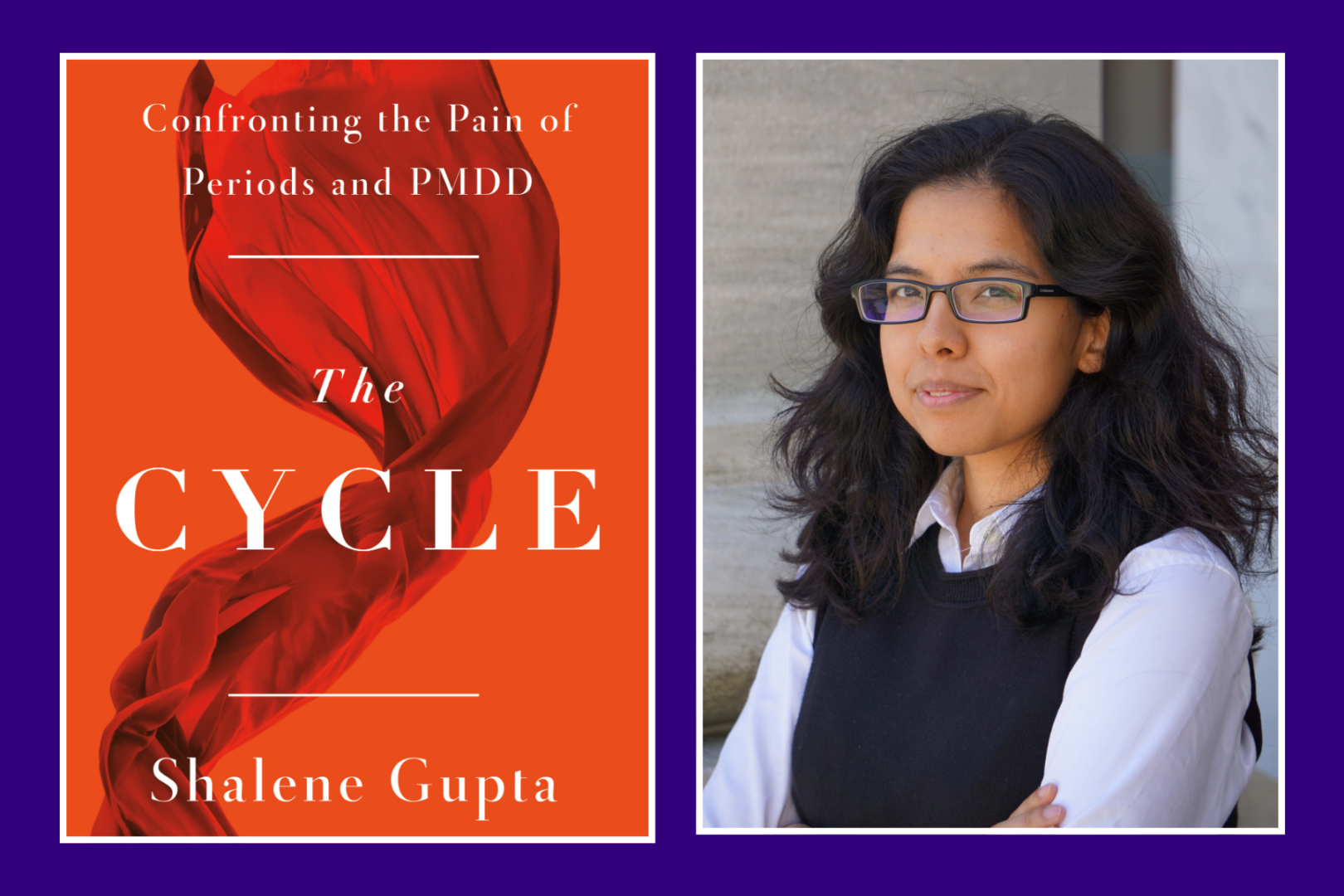
**Trigger Warning: Suicide, Self-harm**
I met Shalene Gupta in the fall of 2021 when I dropped into her writing class on a whim. By spring our friendship blossomed. We spent most weekdays writing our books side-by-side at various Boston cafes.
Shalene could easily moonlight as a motivational coach, since she inspired me to dream bigger about my own writing career every time we talked. After all, Shalene was moving mountains in her own career: she co-authored a book with a Harvard Business School professor, wrote a column in Fast Company, published articles in The Atlantic, and Time — and more recently, even Oprah(!) collabed with her on Instagram. This is why I was so surprised to read her latest book, “The Cycle,” which chronicles her journey with premenstrual dysphoric disorder (PMDD).
[Read Related: Period Health: Learn its History, Rituals, and Practices]
I first heard of PMDD in 2013 when a friend was diagnosed with it and described it as PMS, but worse. I ignorantly assumed that meant she just had painful cramps. So I was astonished and heartbroken to learn in 2024 that Shalene, the empathetic and graceful woman who let me whine about finding writing hard, had actually tried to take her own life multiple times during her struggle with the disorder.
Sadly, she is not alone. One survey by the International Association of Premenstrual Disorders finds that 70% of those with PMDD have suicidal ideation and 30% have actually attempted it. The illness has over 150 known symptoms that begin the week before menstruation, and end the week after menstruation. With primary symptoms including mood swings, depression, anger, or anxiety, PMDD can wreak havoc on relationships and work, require hospitalization, and end in death by suicide.
“The Cycle” examines PMDD through two lenses. The first lens is personal. Shalene paints a stark portrait of the disorder by sharing what she describes as the “worst moments” of her life with complete vulnerability. These moments include explosive fights with her boyfriend and the harm she directed at herself.
Right at the beginning of the book, we find Shalene cutting her leg with a butcher’s knife despite having no obvious reason to be unhappy. Her career was on an upswing, she had a supportive relationship with her parents, and a boyfriend she adored. But the week before her period, Shalene consistently transformed into a tornado of depression and rage. The extreme feelings vanished with the start of her period, with Shalene reverting to her usual gracious and unflappable self.
View this post on Instagram
The details of her PMDD breakdowns are emotional to read, and must have been difficult to write, but she shares them in the hope that people with PMDD, and their loved ones, can get help. After all, at its core, “The Cycle” is a love story. As Shalene gets a diagnosis and treatment for PMDD, she learns to love her partner so that he is not harmed by her PMDD symptoms, while also discovering more compassion and love for herself. In her love story, Shalene gets to experience the true unconditional acceptance we all crave, and that made me tear up more than once.
The second lens Shalene examines PMDD through is sociopolitical. Mental health and menstruation are rife with stigma in the West, as well as in the South Asian community. “The Cycle” explores how this stigma made it extremely difficult for PMDD to get classified as an actual disorder in the Diagnostic and Statistical Manual used by clinicians, and why so many people are unaware about PMDD today. The stereotypes embedded in our collective psyches continue to prevent those with PMDD from getting – or even seeking – the medical help they need.
Shalene writes, “The Cycle isn’t just about the menstrual cycle but also about the sociopolitical cycles that surround PMDD: the never-ending loop of social stigma against menstruation that means menstrual disorders go untreated, adding more stigma to menstruation.”
This section is meticulously researched, citing hundreds of interviews and copious academic papers. It seems Shalene has spoken to everyone who is in some way connected to PMDD: patients, clinicians, researchers, community organizers, loved ones, and more. Shalene distills their scientific and sociopolitical insights with simple language and a sprinkle of humor, making the narrative intriguing, even for someone like me who wasn’t quite the science and history aficionado growing up.
I read “The Cycle” in one sitting on a plane ride. By the time I finished, I felt as though I had experienced a full palette of emotions. The book made me question society’s relationship with female health and how we can better support those with PMDD, as well as more microscopic matters, like whether I had been a good partner in my romantic relationships even without PMDD, and how I could improve in the future.
[Read More: The Period is Political and Religious: Discussions of Menstruation in India]
“The Cycle” is a juicy and stormy read that educates you while making you think deeply about society and your role in it, with sparkling prose and an unexpected serving of laughter on the side.
You can purchase a copy of “The Cycle” here. Follow Shalene Gupta on Instagram and X (formerly Twitter) for more content!




